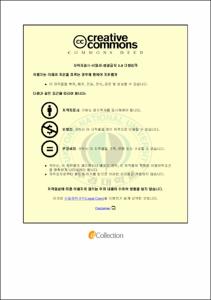초등학교 3, 4학년 영어교과서 문화 분석
- Alternative Title
- An Analysis of Cultural Contents of Third and Fourth Grade English Teaching Materials
- Abstract
- The purpose of this study is first to analyze the cultural contents in third and fourth grade English textbooks, teacher's guides, and e-books for Korean elementary schools based in the Seventh National Curriculum Revision, and then to suggest ways for teaching the cultural content effectively.
Language and culture are inseparable. Therefore, language learners need to understand the target culture as well as the target language for communication. This study is necessary because one of the objectives of learning English is to foster the ability to communicate with both the native speakers of English and people from other parts of the world, and the understanding of the target culture is indispensible for communication.
As for the research method, the first set of criteria were adopted for analyzing the cultural contents in these teaching materials with regard to: (1) linguistic and non-linguistic behaviors in English speaking countries, (2) life styles in other countries, (3) the linguistic and cultural differences between Korea and other countries, and (4) Korean culture contents. The second set of criteria are related to the cultural background of the cultural contents examined in the materials with respect to: (1) ESL, (2) English speaking countries, and (3) Non-English speaking countries.
On the basis of the data analyses, the following findings were made: First, according to the Seventh National Curriculum Revision, 'life styles in other countries' is ranked the highest, as opposed to 'Korean culture contents', which is ranked the lowest. Second, according to the cultural background, 'English speaking countries & non-English speaking countries & ESL' are ranked the highest in the third grade teaching materials, while 'English speaking countries & non-English speaking countries & ESL' and 'English speaking countries' are ranked the highest in the fourth grade teaching materials. Third, the teacher's guides have the most cultural contents, while the textbooks and e-books have the least. The cultural contents of the teacher's guides are mostly written information, whereas the cultural contents of the textbooks are primarily pictures and illustrations, and as epected, the cultural contents of the e-books, are mostly video clips.
The following suggestion is made based on the findings mentioned above. Effective teaching of the target culture seems to be achieved by English teachers who understand the importance of the target culture knowledge and place a high emphasis upon the cultural aspects through exposing the children via the textbooks, teacher's guides, and e-books, that are designed to promote intercultural understanding.
- Issued Date
- 2012
- Awarded Date
- 2012. 8
- Type
- Dissertation
- Publisher
- 부경대학교
- Alternative Author(s)
- Jeong, Seon Hee
- Affiliation
- 부경대학교 교육대학원
- Department
- 교육대학원 영어교육전공
- Advisor
- 박매란
- Table Of Contents
- Ⅰ. 서론 1
1.1 연구의 필요성 및 목적 1
1.2 연구문제 3
1.3 연구의 제한점 3
Ⅱ. 이론적 배경 5
2.1 문화의 개념 5
2.2 문화와 언어의 관계 7
2.3 문화교육의 목표 9
2.4 문화교육의 내용 11
2.5 초등학교 영어교육과 문화교육 14
2.6 선행연구 고찰 16
Ⅲ. 연구방법 19
3.1 연구대상 19
3.2 연구방법 및 절차 19
3.3 분석기준 20
Ⅳ. 자료분석 및 토의 22
4.1 제 7차 개정 영어교육과정 소재에 따른 문화 분석 22
4.1.1 3학년 A, B 출판사간 문화 분석․비교 22
4.1.2 4학년 A, B 출판사간 문화 분석․비교 25
4.1.3 소재에 따른 3, 4학년 문화 분석․비교 27
4.2 문화배경에 따른 문화 분석 29
4.2.1 3학년 A, B 출판사간 문화 분석․비교 29
4.2.2 4학년 A, B 출판사간 문화 분석․비교 30
4.2.3 문화배경에 따른 3, 4학년 문화 분석․비교 32
4.3 교과서, 지도서, e-book 문화내용의 비교 및 대조 33
4.3.1 교과서, 지도서, e-book 문화내용의 빈도수 분석 33
4.3.2 교과서, 지도서, e-book 문화내용의 제시방법 분석 35
Ⅴ. 결론 및 제언 41
5.1 결론 41
5.2 제언 44
참고 문헌 46
부록 49
- Degree
- Master
- Files in This Item:
-
-
Download
 초등학교 3, 4학년 영어교과서 문화 분석.pdf
기타 데이터 / 2.9 MB / Adobe PDF
초등학교 3, 4학년 영어교과서 문화 분석.pdf
기타 데이터 / 2.9 MB / Adobe PDF
-
Items in Repository are protected by copyright, with all rights reserved, unless otherwise indicated.